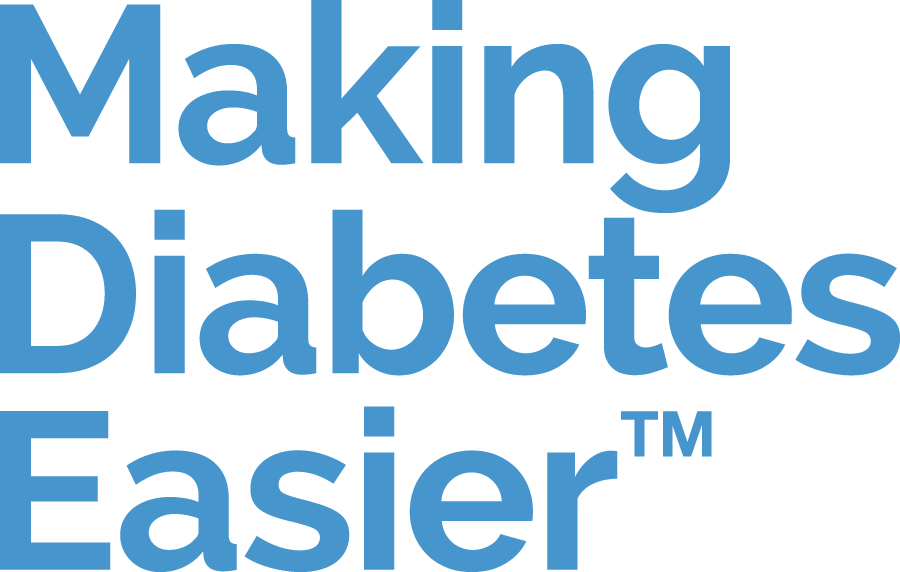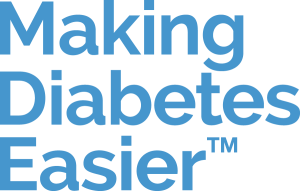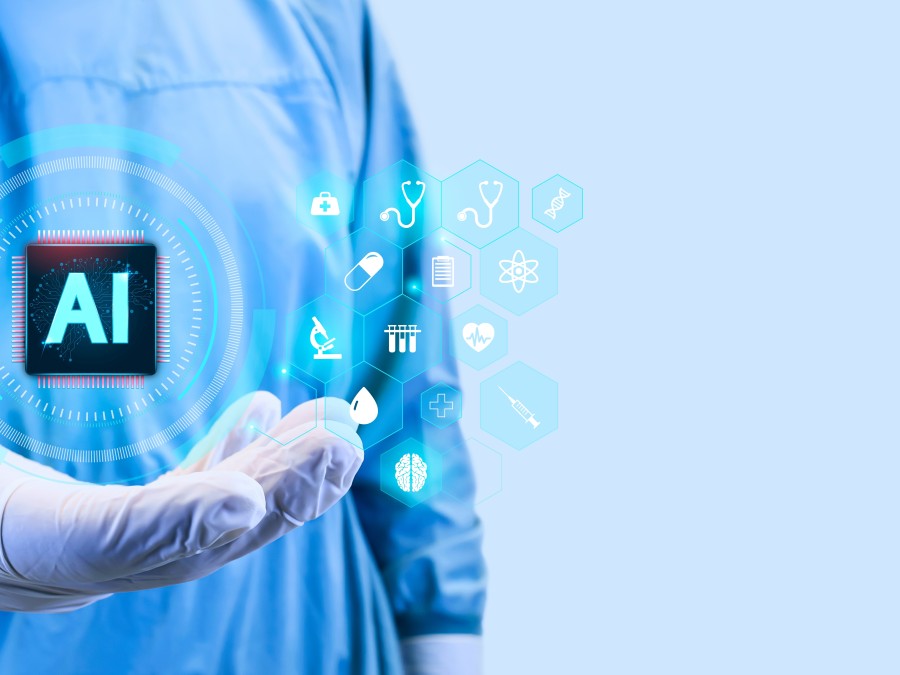Technology: an ally for an easier and safer life with diabetes

We live in an age where technology is no longer a luxury and has become an essential tool for managing health matters like diabetes. As diabetes continues to affect millions of people around the world, technological innovations have transformed the way people live, care after themselves and make decisions about their health. From continuous glucose monitoring systems to smart mobile applications and artificial intelligence, modern tools not only improve your quality of life, but also increase your safety and control over your diabetes.
1. Continuous glucose monitoring: a real time perspective
One of the biggest recent revolutions in diabetes control is continuous glucose monitoring (CGM). These systems enable you to read your glucose levels 24 hours a day without the need for a fingerstick. Recent devices provide information in real time and give alerts when glucose levels deviate outside set levels.
Using CGMs significantly improved glycaemic control in persons with type 1 diabetes, reducing hypoglycaemia episodes and increasing times within the correct range¹. This capacity for immediate reaction enables patients to act before glucose reaches dangerous levels, which not only improves their wellbeing, but also prevents long-term complications.
2. Smart insulin pumps: automation and precision
Insulin pumps have evolved by leaps and bounds over the last decade. What were once simple devices that continuously administered insulin are now automated systems that are integrated with other technologies and devices. Some can be directly connected to CGM devices, and this has led to the development of hybrid closed loop systems, also commonly known as "hybrid closed-loop systems” and often referred to “artificial pancreas”. These systems still require user input and are primarily indicated for type 1 diabetes.
These systems automatically adjust the insulin doses according to current glucose levels, without the user having to constantly intervene. The automation in this process reduces the load of daily decisions that people with diabetes normally have to make and improves the time within range for adults and adolescents with type 1 diabetes². The consequences of these systems include a reduced risk of nocturnal hypoglycaemia, optimised metabolic control and an improved quality of life. But it is very important to understand the importance of initial training and support from healthcare professionals.
3. Digital apps and platforms: easier control
Mobile devices and smartphones have also revolutionised the way we manage diabetes. There are mobile applications where you can log the food you've eaten, your physical activity, insulin dosage and glucose levels. But logging isn't the only option: many other apps also offer integration with devices, automatic reports and data sharing with health professionals in real time.
Interoperability between apps and devices has also greatly improved, and that means you can now have a more unified and less fragmented management system³. This means that people with diabetes don't need to switch between a lot of platforms, reducing errors, improving treatment adherence and making medical follow-ups a lot easier.
Besides, many of these applications include reminder systems, personalised recommendations based on previous patterns and even virtual communities, which offer emotional support and information networks for people with diabetes.
4. Artificial intelligence: prediction and personalisation
Artificial intelligence (AI) is having some very promising effects after its recent arrival in the world of diabetes. Thanks to its capacity to analyse large volumes of data and find hidden patterns, it is being used to predict hypoglycaemias, personalise treatments and prevent complications.
A range of platforms are integrating algorithms that analyse data on glucose and behaviour to anticipate situations of risk before they turn into clinical issues. A meta-analysis showed that automatic learning models can predict episodes of hypoglycaemia up to 60 minutes before they happen⁴. While empowering patient autonomy is crucial, technology works best when integrated into a care plan supported by a diabetes team, so we combine AI and professional humans.
Another study also showed that AI may also be useful in predicting hospitalisations and complications related to diabetes based on constant analysis of data gathered from people with diabetes⁵. There is even some early research being done to explore the use of reinforcement learning algorithms that automatically adjust insulin doses in hospitalised persons⁵. Most AI-driven solutions are still in development or used in research settings, and not yet part of routine diabetes care.
5. Challenges and equal access
Despite the great potential of these tools, there are some serious challenges related to access. The high price of many devices,policies to prioritise patients in greatest need in publicly funded healthcare services, limited health insurance coverage and the digital divide amongst certain groups of the population are major barriers. In countries with fewer resources or in rural areas, technologies such as these are not always available, which further deepens inequalities in diabetes control.Even within publicly funded healthcare services, such as the NHS in the UK or the HSE in Ireland, access is often determined by policies that prioritise patients in greatest need, which can also limit wider availability.
Effectively using these tools also requires some degree of digital literacy, and this may act as an obstacle for the older people, those with less access to technological education. That's why it's essential for public health policies to not only promote technology development, but also guarantee access to them and foster health and digital education.
A freer and safer future
Technology won't replace diabetes self-care or education, but it can complement them. Thanks to current advances, people with diabetes can now make more informed decisions, reduce risks and live with greater freedom. It's not just a question of managing diabetes, it's also about improving your quality of life and providing more people-oriented, simpler and more effective management.
Investment in accessible, safe and personalised technological tools is an investment in a future where people with diabetes can live life to the full. But these tools require training, effort, and involvement from the user to be effective. Not everyone will benefit from these tools due to medical, cognitive, or psychological factors, so the need for individualised care and shared decision-making is important.
Sources
- Heller, S., Bode, B., Kozlovski, P., Christiansen, M. P., & Klausmann, G. (2022). Improved glycemic control in type 1 diabetes using FreeStyle Libre 2 system: A multicentre, randomized controlled trial. The Lancet Diabetes & Endocrinology, 10(10), 786–794. https://doi.org/10.1016/S2213-8587(22)00319-9
- Barua, S., Miao, Y., Jiang, Y., Deng, S., & Wang, M. D. (2023). Personalized lifestyle recommendations for type 2 diabetes patients using continuous glucose monitoring and wearable data. NPJ Digital Medicine, 6, Article 92. https://doi.org/10.1038/s41746-023-00956-y
- Islam, M. M., Yang, H. C., Poly, T. N., & Li, Y. C. (2023). Predicting hypoglycemia using machine learning: Systematic review and meta-analysis. JMIR Diabetes, 8, e46764. https://www.ncbi.nlm.nih.gov/pmc/articles/PMC10591058/
- Zhou, W., Ye, F., Xu, G., Zhou, J., & Ma, J. (2021). Predicting diabetes complications and hospitalization using machine learning: A prospective cohort study. NPJ Digital Medicine, 4, Article 114. https://doi.org/10.1038/s41746-021-00394-8
- Lee, C. S., Yu, Y., Cho, Y., Lee, J., & Lee, S. (2023). Reinforcement learning for insulin titration in hospitalized patients with type 2 diabetes. Nature Medicine, 29, 996–1005. https://doi.org/10.1038/s41591-023-02552-9





